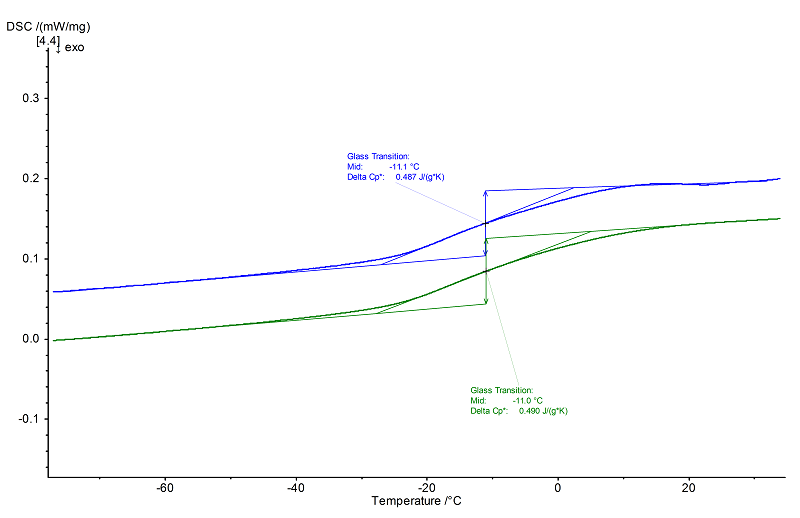CM: Chlorinated polyethylene rubber
- Short Name
- CM
- Name
- Chlorinated polyethylene rubber
- Group
- EM - Elastomers
- General Properties
- Chemical Formula
- Structural Formula
-

Properties
- Glass Transition Temperature
- -25 to -5 °C
- Melting Temperature
- - °C
- Melting Enthalpy
- - J/g
- Decomposition Temperature
- 320 to 340 / 465 to 480 °C
- Young's Modulus
- 2 to 15 MPa
- Coefficient of Linear Thermal Expansion
- 175 to 200 *10¯6/K
- Specific Heat Capacity
- - J/(g*K)
- Thermal Conductivity
- 0.11 to 0.13 W/(m*K)
- Density
- 1.08 to 1.27 g/cm³
- Morphology
- Amorphous rubber
- General properties
- Good ozone and UV light resistance
- Processing
- Cross linking by means of peroxides with activators, radiation or by means of thiazoles
- Applications
- Cable sheathings. Technical rubber products. Hoses for engines. Impact modifier for PVC
Internet Links
NETZSCH Measurements
- Instrument
- DSC 204 F1 Phoenix®
- Sample Mass
- 14.21 mg
- Isothermal Phase
- 5 min
- Heating/Colling Rates
- 10 K/min
- Crucible
- Al, pierced
- Atmosphere
- N2 (40 ml/min)

Evaluation
As an entirely amorphous polymer, CM shows a glass transition step at -11°C (midpoint, both heatings). The glass transition temperature determines the minimal application temperature* for rubber materials. Below the glass transition, the polymer loses elasticity and gets hard and brittle.
The step height (Δcp) is evaluated as 0.49 J/(g.K) in both heatings.
The step height (Δcp) is evaluated as 0.49 J/(g.K) in both heatings.